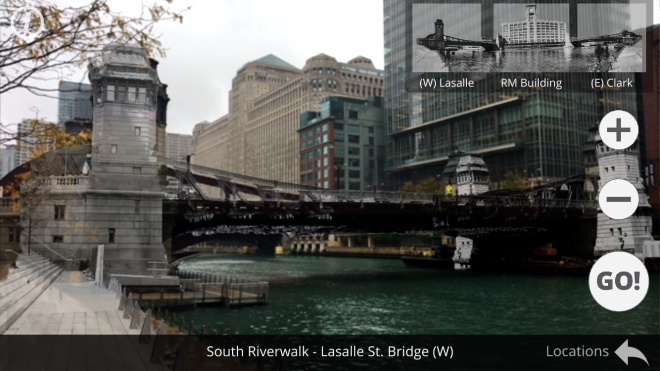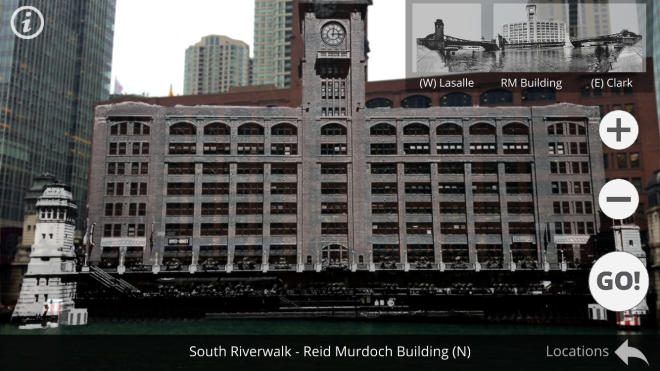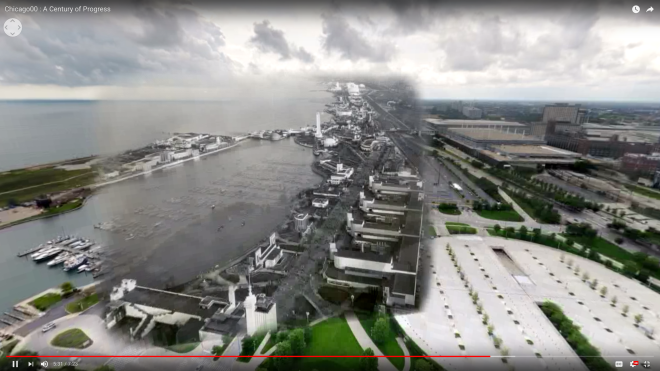In advance of class, select two of the three applications – Eastland Disaster, St. Valentine’s Day Massacre, Century of Progress – developed by the Chicago History Museum and available here. For the Eastland Disaster AR App, go to the historic site of the disaster and try out the app. The other two are VR applications which you can use anywhere. Reflect on your experience of using each. What worked well? What would you like improved? How did it change your experience of the site? How do you envision it might be used by other types of visitors? Answer these questions first as a UX (user experience) expert by analyzing the functional experience. Then, answer as a user, reflecting on the nature of the storytelling, the value of creating this media-driven experience around these historical materials, and what is lost and what is gained by focusing on digitized collections.
I think there’s a lot of potential for using AR to present history in a public way. In partnership with the Chicago History Museum, these three apps aim to tie archive materials to historical events in a new way using mixed media.
I was downtown this Tuesday at Loyola’s Water Tower campus and decided to walk south to the river to try out the Eastland Disaster VR app. This assignment prompted me to learn more about the disaster itself, both through the app and also Wikipedia. It was shocking to learn about it and how high the death toll was: “A total of 844 passengers and crew were killed in what was the largest loss of life from a single shipwreck on the Great Lakes” (source).

A panorama I took before descending the stairs to get closer to the water.
I walked down the steps from here to begin the tour. It was the first really cold day of this season and raining all afternoon. Although I was in a bit of a sullen mood getting down there, I also thought that the gloomy weather was kind of appropriate. The place itself felt eerily deserted. I thought about ghosts and considered how sites of historical tragedy become subsumed once again into everyday life in the city. I have been at this exact portion of the riverwalk countless times, but never aware that the disaster had happened here. I like that this kind of AR storytelling can make the invisible visible.
I walked down to the river and opened the AR tour portion of the app. I like that includes a function to save screenshots.



Unfortunately, my experience using the app was short-lived and not very rewarding. My phone had about 50% battery when I arrived. After using the app for only a minute or two it crashed completely and shut off to a black screen. When I rebooted the phone only had 10%, which was just enough to open the app one more time and repeat all over again. To be fair, the hardware and ios software share the blame. But it was disappointing to make the trek and have technical difficulties.
So in response to the questions about UX, I would like to see overall stability improved so that perhaps the app uses less system resources like ram and battery. Because of my own experience, I have a hard time imagining other visitors taking the time to move between all seven locations on the app. I wonder how it could be modified so as to incorporate more of a guided tour that could create incentive for viewing the site from all the different vantage points.
The other two applications are less site-specific and can be viewed anywhere. I did not have access to a VR viewer and so had to settle for Youtube’s 360-video, which was still fun to play around with during the narrator’s guided tour of Chicago’s 1933 World’s Fair and The St. Valentine’s Day Massacre. Both of these covered events of which I had only vague prior knowledge. I especially enjoyed the one on the World’s Fair because I’ve read Erik Larson’s book The Devil in the White City, but never seen so many archival photos of what the site looked like.



The storytelling was effective in these two interactive videos, moving at a nice pace but with enough detail to keep my interest. By using digital materials in such a way, there is are obvious gains involving novelty and accessibility. There seems a lot of potential to create memorable experiences when historical stories are reframed as engaging experiences for the viewer/user. Viewing these photos behind glass in a museum would be a very different and experience. These apps reconnect the archived materials back to a specific sense of place. They blend the historical moment with our present here and now, and it’s much easier to tap into people’s emotions to create meaningful connections through these kinds of mixed media experiences.